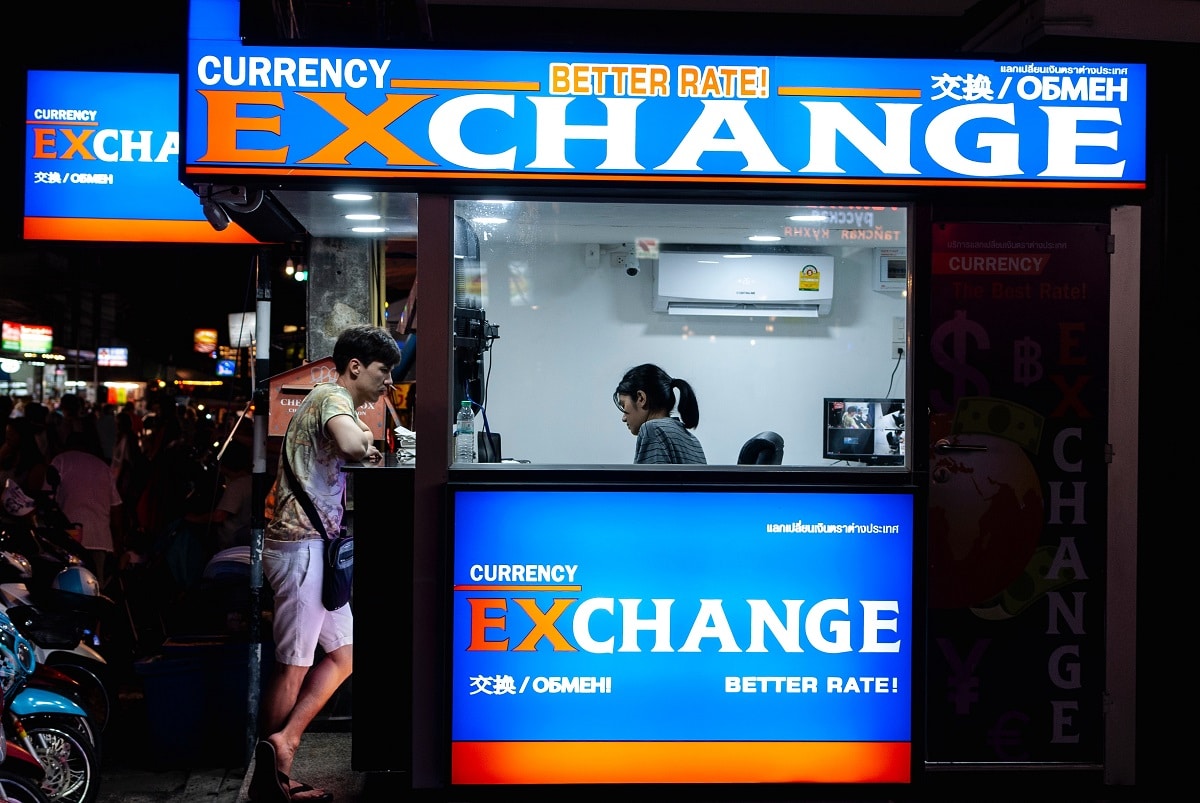
How to Calculate Exchange Rates on a Job Application Test?
Are you applying for a new job? Will calculating exchange rates be an important part of that job? If so, you’re going to need to show your aptitude for making such calculations. Chances are that your prospective employer will ask you to complete a numerical reasoning test.
What exactly is an exchange rate? Why are they important? How do you calculate exchange rates? Before you complete your numerical reasoning test, read the information presented below. It will provide answers to these questions and more, and help you ace that test and land the job.
Table of Contents
What Is an Exchange Rate?
An exchange rate is a rate that a specific currency is exchanged for another type of currency. Exchange rates impact trade, as well as the movement of currencies, between countries around the world.
There are two key factors that impact exchange rates:
- The value of a domestic currency
- The foreign currency value
Exchange rates between the currencies of two countries are often determined by the following:
- Economic activity
- Market interest rates
- Gross domestic products
- The unemployment rate in both countries
Often referred to as “market exchange rates”, the exchange rates between two countries are established in the global financial marketplace.
Here, banks, such as the Bank of International Settlements, and central banks, such as the US Federal Reserve, as well as other financial institutions, such as Wall Street, trade currencies on an around-the-clock basis.
That trade is based on these factors. Rates are always fluctuating and can change on an hourly or daily basis. These changes can either be nominal or substantial.
Usually, exchange rates are quoted with an acronym for the national currency that the exchange rate represents. For instance, for exchange rates of the US dollar use the acronym USD. The acronym EUR is used for the euro and the Japanese yen is known as JPY.
When quoting the currency pair for the US dollar and the euro, you would see EUR/USD. When quoting the currency pair for the US dollar and the Japanese yen, you would see USD/JPY. The exchange rate of 100 illustrates that 1 US dollar is equivalent to 100 yen.
How to Calculate an Exchange Rate – An Example
To illustrate how exchange rates work, we’ll use the following example. Say someone is travelling to France from the United States and wants to exchange 200 USD worth of EUR before they arrive in France.
The sell rate would be the rate at which the traveller sells his foreign currency in exchange for the local currency, or in this case, the amount the traveller would sell his USD for EUR.
The buy rate describes the rate at which the traveller would purchase a foreign currency back in order to exchange it for the local currency.
The Calculation
For example, if the current exchange rate between the USD and the EUR is 1.05, the traveller would receive €190.48 for his $200 USD.
To calculate this exchange rate, use the following equation:
- USD / exchange rate = EUR
- Or $200 / 1.05 = €19048
At the conclusion of the traveller’s trip, say he had €66 left and the exchange rate dropped to 1.02, you could use the following equation to determine how much he would receive in USD for his EUR: €66 x 1.02 = $67.32.
With the Japanese yen, a different calculation determines the exchange rate. The dollar is placed in front of the yen, or USD/JPY. As such, the equation used to determine the exchange rate between USD and JPY would be as follows: USD x exchange rate = JPY.
Using the above calculation, if someone is travelling to Japan from the United States and wants to change $100 USD into Japanese yen, and the current exchange rate is 110, they would use the following calculation: $100 x 100 = ¥11,000, so the individual travelling from the US to Japan would get ¥11,000.
How to Find Market Exchange Rates
As mentioned, traders, banks, and other institutions purchase and sell the currencies of virtually all countries 24 hours a day, Monday through Friday (except holidays). In order for a trade to take place, one country’s currency has to be exchanged for another country’s currency.
For example, to purchase British pounds (with the acronym “GBP”), another currency must be used for the purchase. Whichever country’s currency buys the British pounds will create a currency pair.
For instance, if US dollars (USD) are used to purchase British pounds (GPB), the exchange rate for this currency pair would be GBP/USD. The currency that is being purchased will be illustrated first in the pair, and the currency that is making the purchase will be illustrated second in the pair.
Access to forex markets, traders, investors, banks, and other institutions can be found on one of the major forex brokers.
How to Read an Exchange Rate
If someone were purchasing US dollars to purchase Canadian dollars (CAD), the currency pair would be USD/CAD, and if the USD/CAD currency pair were 1.33, this means that it would cost the buyer 1.33 Canadian dollars to purchase 1 US dollar.
The first currency listed in the exchange rate (in this case, the USD) always represents one unit of that specific currency.
The exchange rate demonstrates how much of the second currency (in this case, CAD) would be necessary to buy one unit of the first currency (again, in this case, USD).
The formula
The given rate illustrates how much it will cost to purchase a single US dollar with Canadian dollars. In order to find out how much it will cost you to purchase one Canadian dollar with US dollars, you can use the following formula:
1/exchange rate
For this example, 1 / 1.33 = 0.7518, so it would cost 0.7518 US dollars in order to purchase one Canadian dollar, and this price would be illustrated using the CAD/ USD pair. It’s important to note that the positions of the currency in the aforementioned pair have changed.
Examples of currencies that are commonly used for trading against the US dollar include the following:
- The euro (EUR/USD)
- The Japanese Yen (USD/JPY)
- The British pound (GBP/USD)
- The Swiss Franc (USD/CHF)
- The Canadian dollar (USD/CAD)
- The Australian dollar (USD/AUD)
- The New Zealand dollar (USD/NZD)
Again, it’s important to note that the position of each currency in the above-mentioned pairs illustrates the direct quote schemes that are customarily used for each individual pairing.
Understanding Currency Exchange Tables
In order to calculate exchange rates, typically, the currency exchange data is illustrated in tables. The first kind of currency table specifies other types of currencies with respect to one specific currency, we assume that the value of that specific currency is 1.
Factors That Affect Exchange Rates
Why is it that exchange rates change so often? Well, these rates depend on various factors, including interest rates, money supply, and financial stability.
Let’s take a closer look at how each factor impacts exchange rates:
- Interest rates. Interest rates, inflation, and exchange rates are very closely linked, as they directly impact one another. When financial organizations such as the central banks change interest rates, it impacts currency values. As interest rates alter, the value of currencies changes, too. The higher the interest rate, the higher the return lenders will receive when compared to their economies, which motivates increased spending in another country, which results in a surge in foreign capital and an increase in the exchange rates. As you can likely assume, decreasing interest rates have the opposite impact on currency exchange rates. When interest rates go down, exchange rates go down. Higher interest rates increase the value of a country’s currency, which prompts investors to exchange local currency for higher-valued currency.
- Money supply. The amount of cash a country has available also impacts exchange rates, as well as inflation. The more money a country’s central bank creates, the higher the inflation will be, as there will be too much money in circulation. As a result, a country’s currency won’t be worth as much.
- Financial stability. The economic well-being of a country also impacts exchange rates. If the economy is strong, individuals will purchase goods and services, which results in more currency being put into the local economy.
The Fluctuation of Exchange Rates
Exchange rates can either be free-floating or they can be fixed. A free-floating exchange rate increases and falls as a result of changes in the foreign exchange market, while a fixed exchange rate is pegged to the value of another country’s currency.
for example, the range that the Hong Kong dollar is pegged to the US dollar is between 7.75 and 7.85, which means that the value of the Hong Kong dollar to the US dollar stays within this range.
Exchange rates have a cash value, or a “spot rate”, which represents the current market value for a particular currency. Exchange rates can also have a forward value. This is an amount related to the expectations for the currency to rise (increase) or fall (decrease) compared to the spot price of the currency.
Because of changes in the expectations of interest rates in the future in one country compared to another, forward rate values can fluctuate.
To illustrate, if traders suspect that monetary policy in the Eurozone will be eased versus the euro, traders might decide to purchase the dollar versus the euro, resulting in a downward trend in the euro’s value.
A Final Thought
Learning to calculate exchange rates with ease takes practice. But luckily, that is something within your control. If you are about to take on a maths exam or a numerical assessment for a new job, online practice tests can help you prepare.
Check out the resources at Job Test Prep and apply the knowledge you’ve learned here, and you will soon be on the path to success.
Sarah is an accomplished educator, researcher and author in the field of testing and assessment. She has worked with various educational institutions and organisations to develop innovative evaluation methods and enhance student learning. Sarah has published numerous articles and books on assessment and learning. Her passion for promoting equity and fairness in the education system fuels her commitment to sharing insights and best practices with educators and policymakers around the world.






